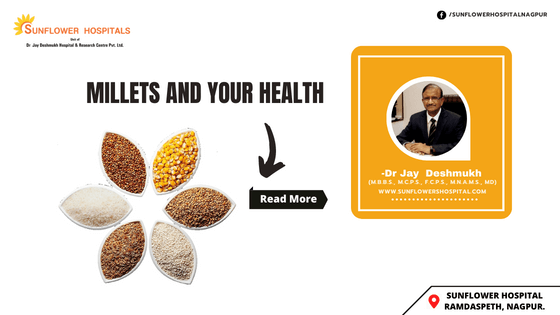Why this year has been important for millets?
2023 has been designated as the International Year of Millets after India proposed this at the United Nations. This was endorsed and accepted at the 75th session of the UN General Assembly.
What are Millets?
These are coarse grains consumed in India and Africa for the last 5000 years. However, during the green revolution, millets took a back seat and instead rice and wheat took a centre stage. Millets are grown easily in the hot dry climate in India and Africa and require less water and ground fertility for their sustainability. The affordability of millets makes them a poor man’s grain.
What are the different types of millets available for consumption?
Naked grains refer to Ragi, Jowar and Bajra. They do not require processing after they are harvested. These millets are ready to use after clearing these are significantly consumed and cultivated today.
What are husked grains?
Foxtail millets, Little and Koda millets have an indigestible coat Millets though an integral part of our diet for many centuries has been forgotten completely till recently. Lifestyle disorders like obesity and diabetes have been linked to the diet we have. It is time to take a hard look at our diet and introduce millet in place of rice and wheat due to its enormous health benefits
that have to be removed before consumption. Nachni comes under this category.
Do millets aid in weight loss?
Their calorie content is low, and they are excellent food products for weight loss. It helps to maintain a good energy level throughout the day with no need to refuel periodically. Millets keep you satiated for longer periods of time than other carbohydrates. This prevents snacking and overeating. How do millets help you with diabetes care? Millets have a low glycaemic index than wheat and rice, and thus they are better suited for diabetics and for those who want to shed some weight. Incorporating millet into your diet would certainly help.
How do millets help you in digestion?
Symptoms like bloating, cramping, gas, and constipation are common in the general population. Millets have very high fibre content and thus prevent most digestive complaints.
Do millets have antioxidant properties?
Millets help you to detoxify your body due to their antioxidant properties. Quercetin, curcumin, ellagic acid, and other catechism flush out toxins from your body and neutralize the dangerous oxidants.
What about millet and your cardiovascular system?
Millets have high potassium, phosphorus, iron, zinc, and some essential fats that help to maintain healthy blood pressure and make blood vessels more amenable to sustain the enormous job of circulation.
What about millet and gluten?
Thankfully, millets are gluten-free and make them an ideal grain for those with gluten-induced diarrhoea and other digestive issues associated with gluten allergy. Glutens are high in fibre, rich in essential amino acids, vitamins, and minerals, and naturally gluten-free. With a low glycaemic index, it makes them an ideal grain in place of rice. Millets have substantial benefits for cholesterol, diabetes, weight loss and indigestion.
Author: Dr Jay Deshmukh
Dr Jay Deshmukh is Chief Physician and Director, Sunflower Hospital, Nagpur Honorary Physician to Honorable Governor of Maharashtra and PondicherryCentral. Dr Jay Deshmukh is an M.B.B.S., M.C.P.S., F.C.P.S., M.N.A.M.S., MD From Internal Medicine – Bombay and New Delhi.


